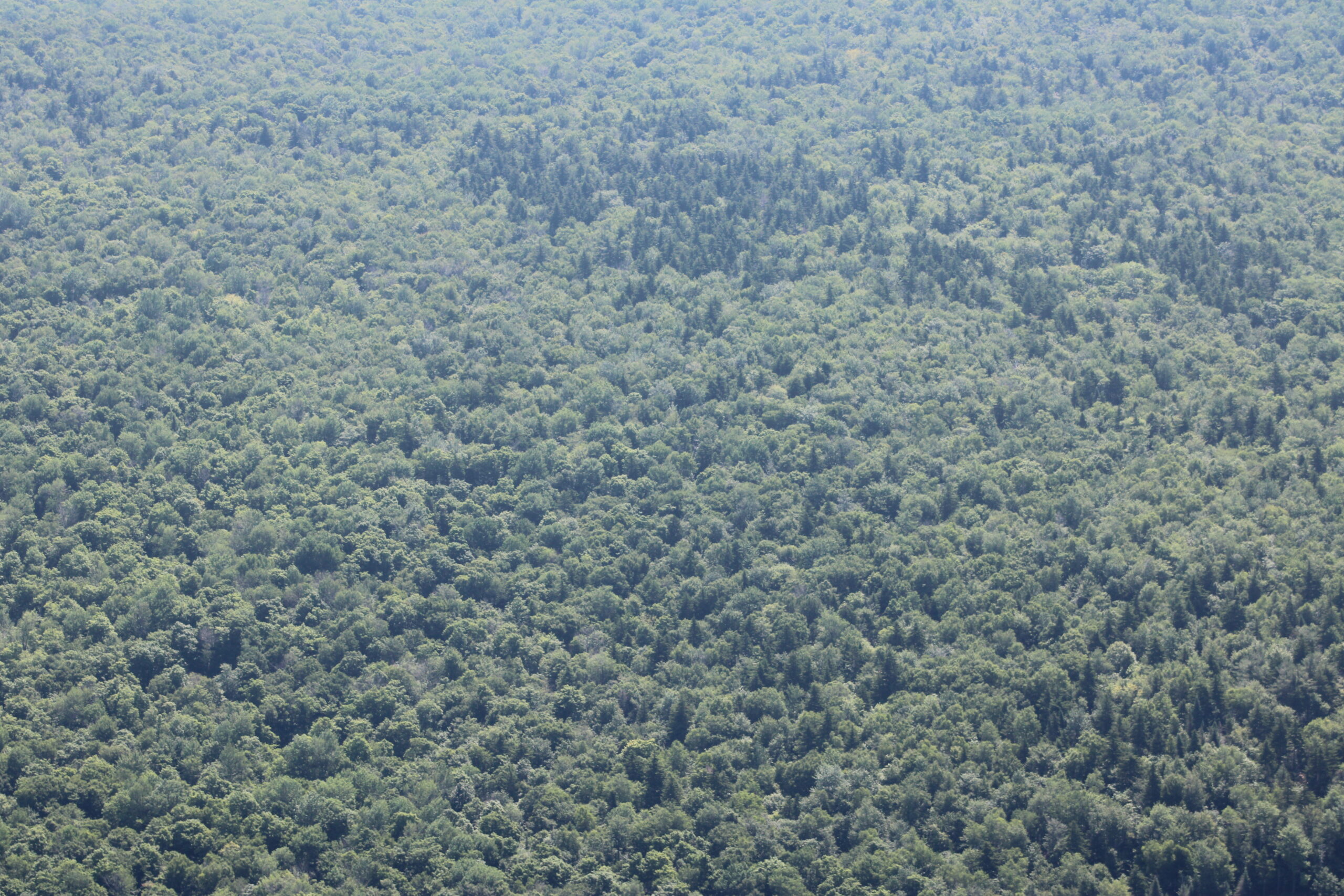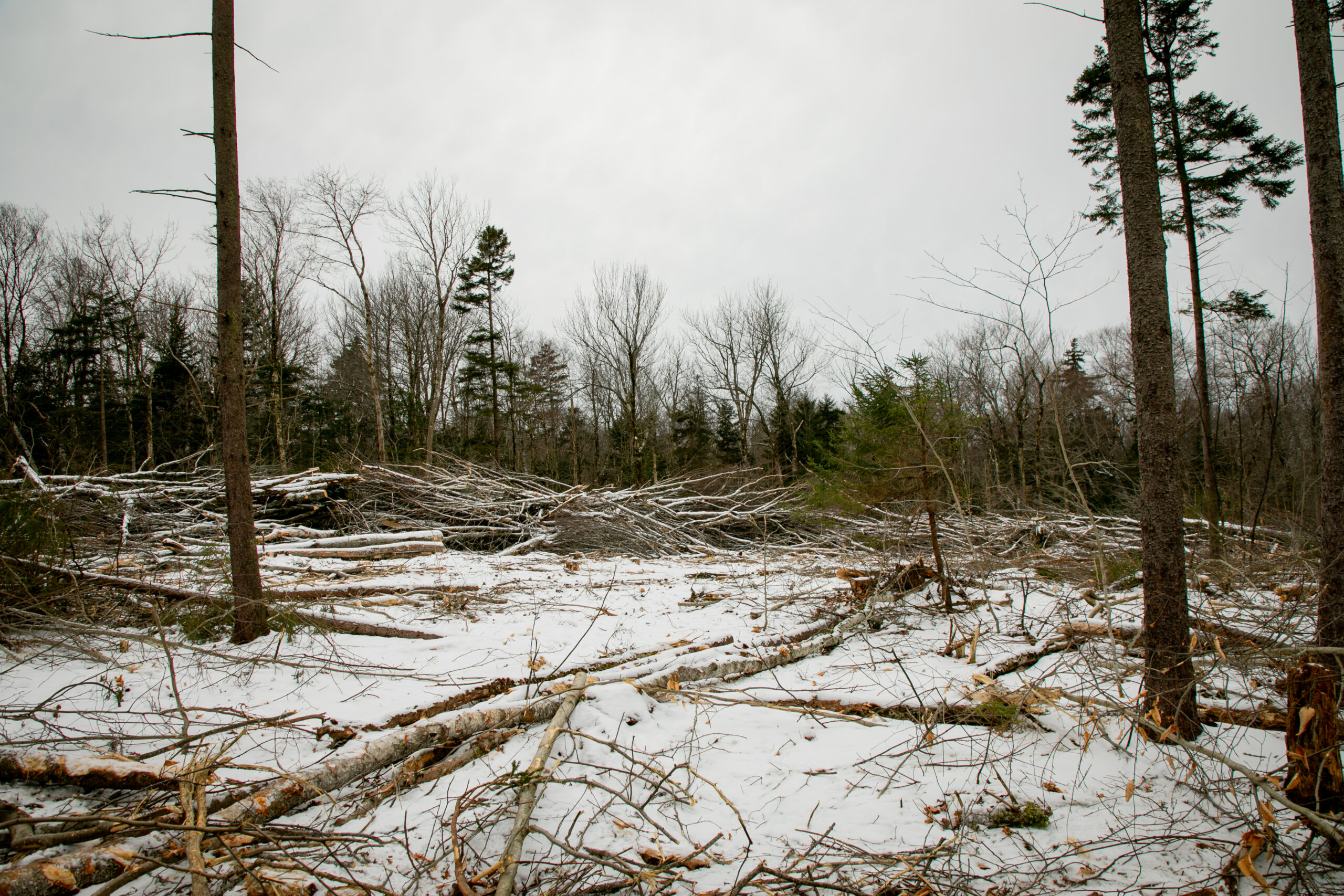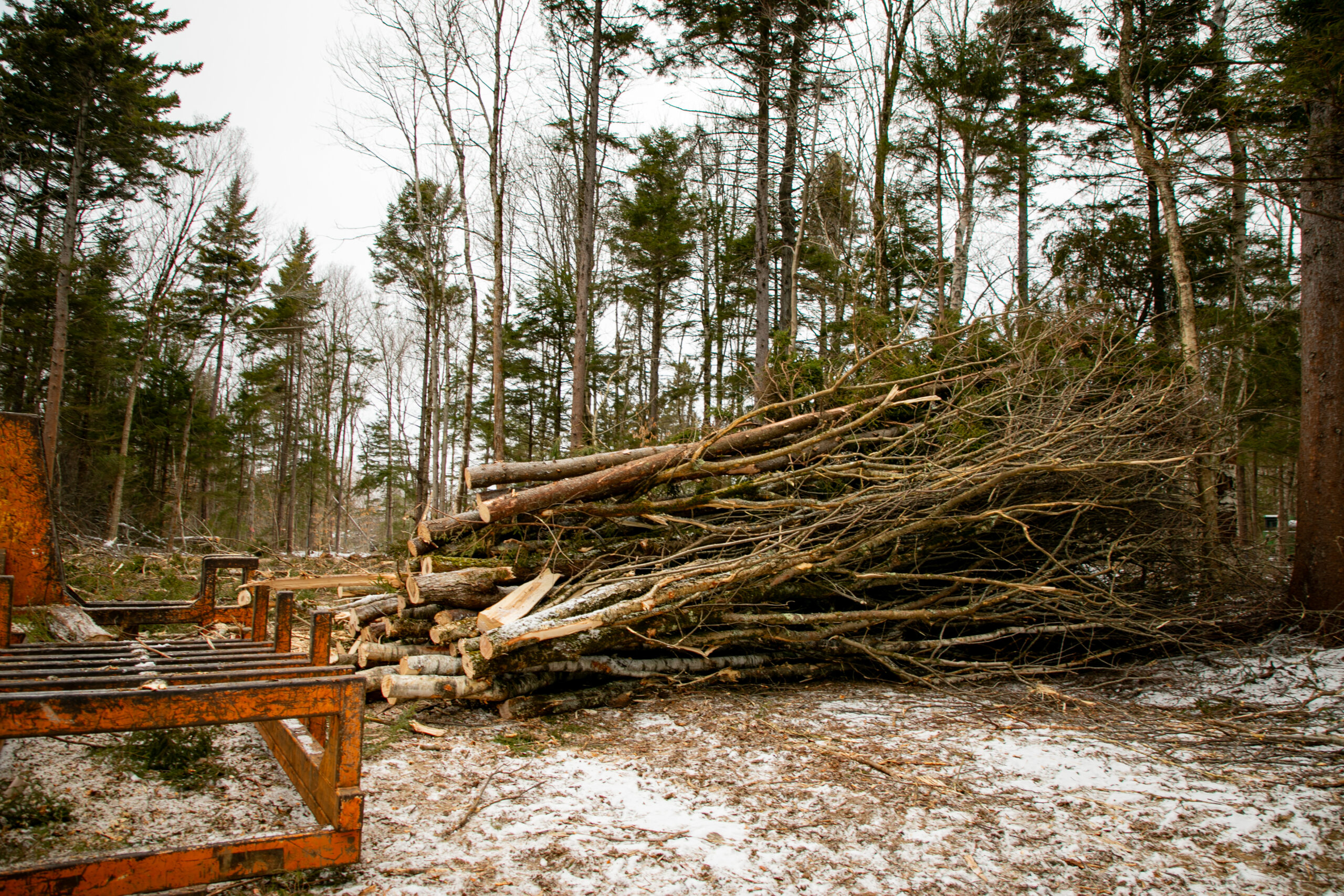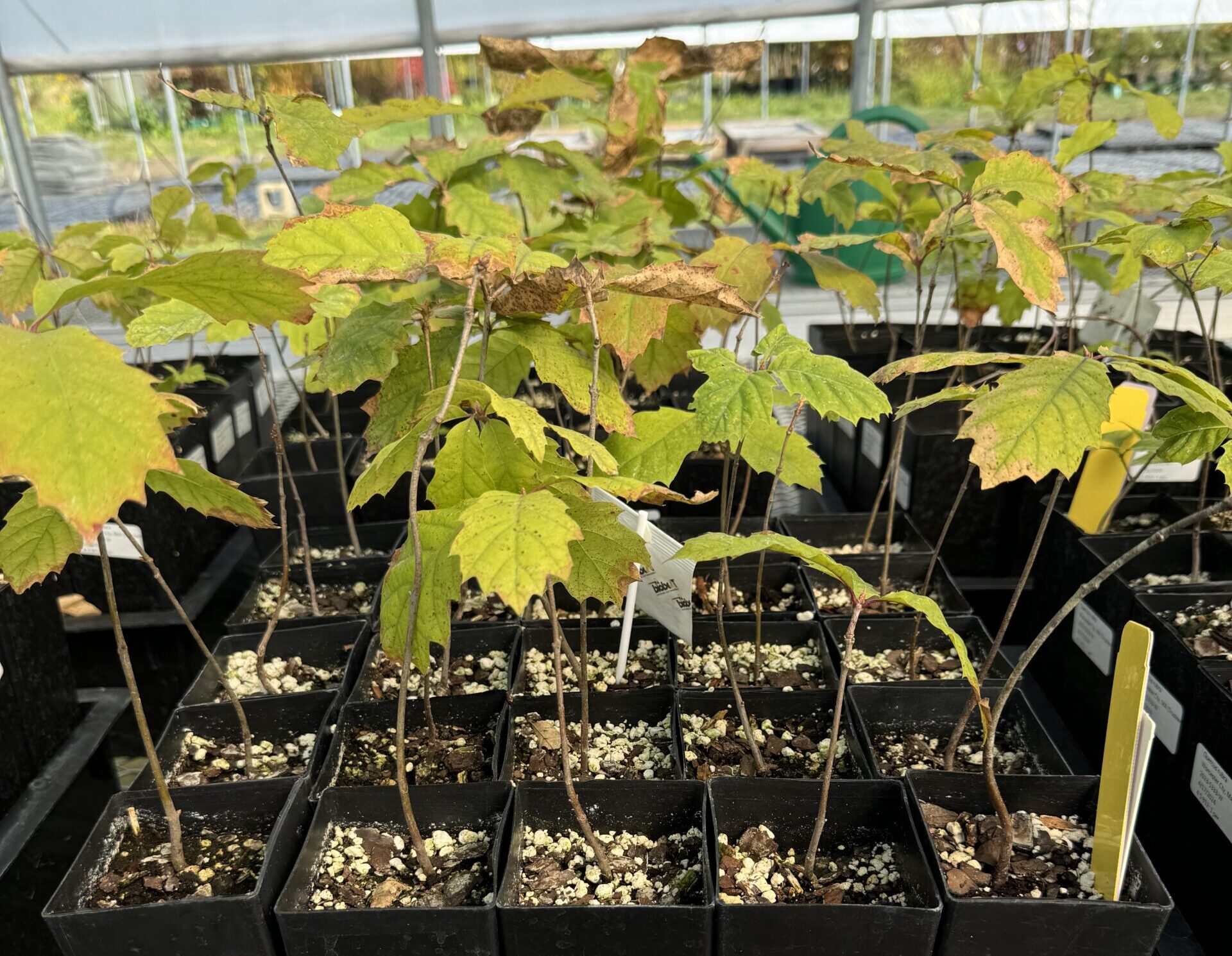By JoJo Brennan, Trustees Staff

Some of Notchview's 3100+ acres of dense and diverse forest from above.
With over 3,100 acres of forests, wetlands and grasslands, Notchview—in the Berkshire County hilltown of Windsor—provides visitors with ample space to recreate, from winter cross-country skiing and snowshoeing, to spring wildflower and summer hikes along miles of trails. The forest ecosystem that holds cherished memories for many also provides key environmental functions including wildlife habitat and biodiversity, healthy soils and water, and carbon sequestration.
Facing increasing temperatures and shifting rainfall patterns due to climate change, the Notchview landscape is at risk. The Natural Resources team at The Trustees is facing those risks head-on, and choosing to counter them with resiliency measures, aimed at helping the forest adapt and change to the shifting climate.
A Changing Climate

Dr. Julie Richburg (right) about to fly over the site at Notchview in 2024 in preparation for the forest resiliency project. This flyover was made possible through the donation of pilot and plane through LightHawk conservation flying.
“Our team thinks about how we can support biodiversity by ensuring our properties include resilient habitats,” shared Dr. Julie Richburg, Trustees Director of Inland Ecology. “Resilience is a measure of the habitat’s adaptability to a range of stresses and reflects the functional integrity of the ecosystem. In short, resilience is the capacity to withstand or recover quickly from ecosystem stressors including disturbances, non-native species, and changing weather patterns.”
Across Massachusetts, the habitat for many northern tree species is projected to decline as climate conditions become less suitable. Species like red spruce and balsam fir are expected to be most vulnerable, particularly in places like Notchview, which lie at the southernmost part of their natural range. Species like beech, hemlock, and ash are dealing with diseases and pests that put them at greater risk, too.
“We end up with a forest that’s changing because of these outside pressures,” shared Richburg. “That leads us to ask questions: how should we be thinking about the future of this forest? What should we do? How can we increase resiliency that will allow this forest to remain as forest into the future?”
“We know that low diversity forests are at greater risk,” she continued. “High diversity systems are generally more resilient. So, as some of these tree species are declining or being removed from the ecosystem, like the white ash and beech, the diversity and resiliency of these ecosystems is compromised.”
A Changing Forest

In early 2025, construction began on the slash wall, an exclosure that will be built up to protect new seedlings planted. Photos show early stages of construction, well before the wall reaches its maximum height.
At Notchview, the team is working on active transformation of the forest ecosystem to build its resiliency across approximately 100 acres. The ongoing project led by the Natural Resources team seeks to proactively address the changing forest by deliberately introducing and regenerating species that are projected to adapt to new climate conditions in the region.
“We started thinking about adding diversity and resilience to the forest at Notchview in the form of trees that are likely to persist under future climate conditions, such as red oak. If we can get seedlings started now, they will hopefully become mature canopy trees in the future, allowing key ecosystem services to continue in this landscape including wildlife habitat and water quality and quantity,” shared Richburg.

Remnants of trees such as treetops and branches are used to create the slash wall that will protect many of Notchview's newest seedlings.
Red oak seedlings and acorns were collected from a variety of Trustees properties where the trees are dominant parts of the forest, including Peaked Mountain in Monson, Moose Hill Farm in Sharon, Brooks Woodland Preserve and Swift River Reservation in Petersham, and Cormier Woods in Uxbridge. By sourcing from various properties in regions of the state already warmer than Windsor, the team will be able to observe if slight differences in the genetics of the red oaks across the region may make them successful with the current environmental conditions at Notchview.
The seedlings have been growing at a local farm run by the Native Plant Trust to allow for several years of growth before being planted at Notchview. The young trees will be planted inside a structure called a slash wall, which will enclose approximately 12 acres.
Slash walls prevent deer and moose from eating the tree seedlings. “Slash” is a term that refers to material that’s left in the woods after timber harvesting, often remnants like treetops and branches. Over time the wall that is created around the seedlings will degrade naturally while the seedlings turn into trees outside of the reach of deer and moose.
“The hope is that by the time the wall can be breached by deer, the seedlings have grown tall enough to avoid being totally consumed,” Julie shared.
Material to build the slash wall was harvested from approximately 25 acres within and surrounding the location of the slash wall at Notchview. The red oaks, which grow faster in forest openings without deep shade, will grow along with some residual trees within the slash wall. Outside of the wall, an additional 20 acres of forest was harvested to allow for additional oak planting, allowing for comparative monitoring of success of tree growth within and outside of the structure. Planting is planned for late summer 2025.

Seedlings collected from a variety of Trustees properties have been growing at a local farm run by the Native Plant Trust before being planted at Notchview.
“Forest and habitat management will continue to be an important part of our work at The Trustees. I look forward to planting, monitoring, and sharing the results of this effort with our members and visitors and more broadly,” said Richburg. “This project is just one of many we are conducting to ensure resilient ecosystems will persist at our special places for everyone, forever.”
The Trustees will continue to share updates on forest resiliency efforts at Notchview and additional ecological projects in upcoming editions of Special Places and on our website.
This grant award to support resilience at Notchview was made possible by the Wildlife Conservation Society through its Climate Adaptation Fund. Support to establish the Fund was provided by the Doris Duke Charitable Foundation. This project was also funded through the generosity of a private donor.





